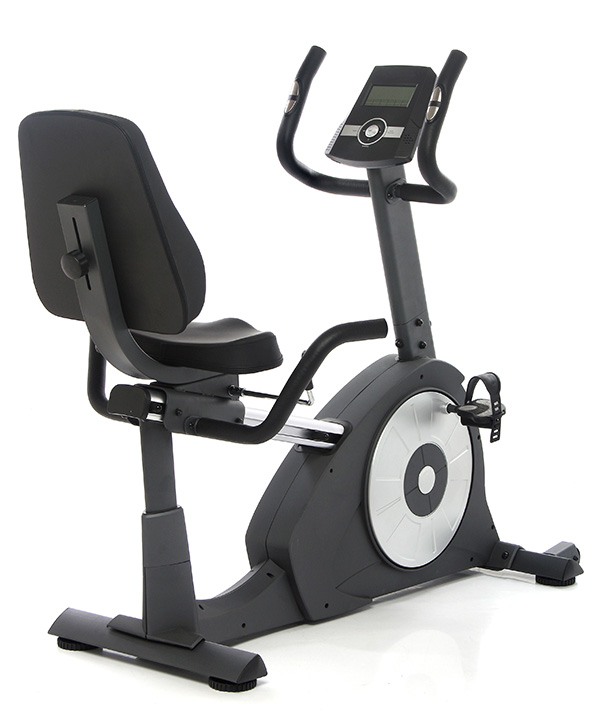Exercise Bike


Vertical Design
Ideal for those that are just starting off with a new cardio routine, exercise bikes offer a zero impact workout while elevating the heart rate. It should be noted that with no footfall action there can still be stress put on the knees from pushing the pedals of the bike. Often, starting out at a lower level of resistance will allow the knees to warm up resulting in less stiffness/soreness.
Exercise bikes are most often found in two designs: the vertical design where the seat is elevated above the pedals and the other is the horizontal design with the seat almost parallel to the pedals (the pedals are about 6 inches below the seat line). The benefits of the two designs are the same but utilize different body mechanics.
Vertical Design Mechanics
This design closely mimics a standard bicycle with the legs extending downward. The arms can be left limp at the sides or placed on the grips across from the body. Using the grips is ideal as it forces the muscles to tighten around the core as they support the upright position.
Horizontal Design Mechanics

Horizontal Design
This design generally offers a fuller seat which can add much needed support/comfort to overweight individuals as well as additional comfort for males. With the horizontal design, the exercise bike usually has hand grips directly below the seat. This may feel more comfortable but the loss of the core having to support itself using the front grips can be fairly substantial.
Pros of the exercise bike:
- Great for beginners
- Allows for year round cycling in any climate
- Ability to track exact distances
- Able to set workout routines such as flat surface or incline rides (through varying resistance levels)
- Heart rate monitor allows for target heart rate zone tracking
- Allows for a low impact workout
Cons of the exercise bike:
- Little to no use of the upper body
- Takes much longer to burn same calories as running
- Does not target buttocks as well as running/elliptical machines




